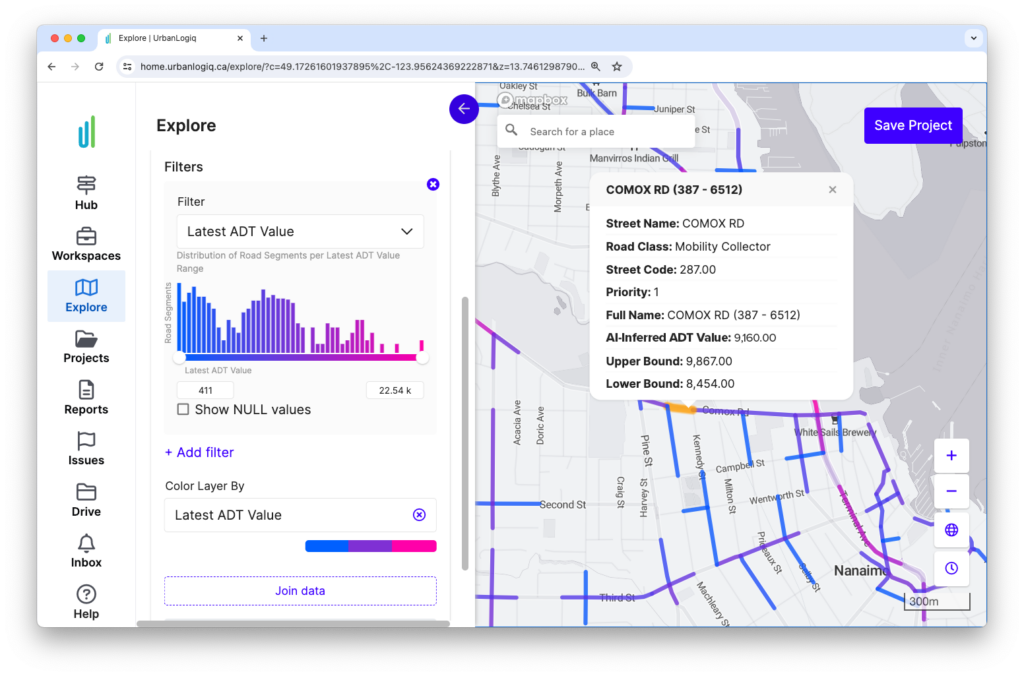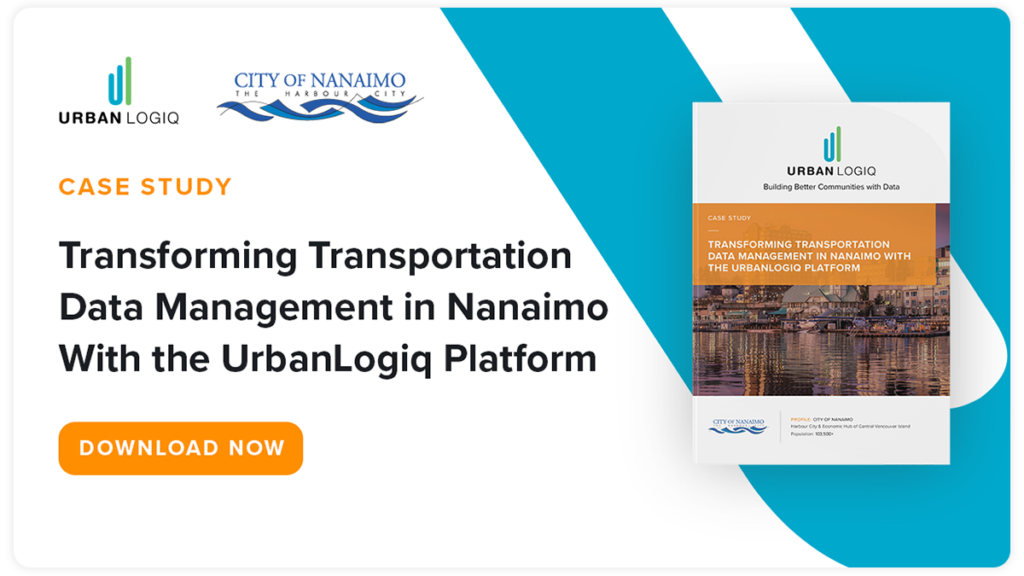How Transportation Departments Can Save Time and Budget with AI-Powered Traffic Metrics
Governments rely on key mobility metrics to understand the effectiveness of their transportation networks. Metrics focused on mobility, road safety, and accessibility are crucial for public leaders to make informed improvements across their systems. A common thread among these metrics is their reliance on data, which is typically expensive and complex to gather and analyze. For example, traffic volume studies can cost $1,500- $3,500 per intersection!
What are Transportation Data Collection Programs?
Transportation departments maintain comprehensive traffic data collection programs that are integral to the operations and improvements of their transportation network. This data is essential for informing decisions on traffic flow improvements, including upgrades to intersections, lanes, and the timing of traffic signals.
The (Not-So) Hidden Costs of Transportation Data Collection
Traditional traffic data collection methods, including cameras, pneumatic tubes, and manual counters, come with significant costs. These methods involve the initial outlay for equipment and ongoing expenses for operation and maintenance. Furthermore, the data collected must undergo extensive processing for normalization and integration into traffic management systems, further adding to the cost and complexity.
Benefits of AI-Powered Traffic Metrics
Imagine leveraging your existing data to infer traffic metrics across unmonitored network sections. UrbanLogiq offers an innovative feature that utilizes artificial intelligence to infer traffic metrics like Average Daily Traffic at locations where data is missing.
“Incorporating AI-powered traffic metrics into our platform allows cities to gain insights without the high costs and time associated with traditional traffic surveys. Our goal is to empower planners and engineers with data-driven tools that support more informed decision-making at a fraction of the cost.” – Mark Masongsong, UrbanLogiq CEO.
This approach not only fills gaps in traffic data coverage but also significantly reduces the need for physical data collection, thereby saving costs and time.

AI-inferred ADT values along road segments in the UrbanLogiq platform
Case Study: The City of Nanaimo
UrbanLogiq’s AI-powered traffic metrics were developed in collaboration with the City of Nanaimo, who are currently utilizing AI-inferred ADT to:
- Understand the traffic flow on roads where they haven’t collected data in the past.
- Calculate crash rates. Crash rates are metrics that measure the frequency of traffic crashes within a specific area, calculated by the number of crashes per unit of traffic volume or distance travelled. These crash rates help identify high-risk areas and guide road safety improvement programs.
“Traffic volumes are a key element of transportation engineering. Traditional methods for acquiring this information are costly and typically mean that network-wide data sets can take years to produce and renew. Through our partnership with UrbanLogiq, we now have a more complete view of our system which can be updated more frequently with less effort. All of this enables us to make more informed decisions when investing in road improvement projects across our community, ” says Jamie Rose, Transportation Manager at the City of Nanaimo.
Saving Staff Time and Taxpayer Dollars
Incorporating AI to infer mobility metrics like ADT can transform traffic data collection, making it more economical and expansive. By reducing reliance on traditional and costly data collection methods, governments can allocate resources more effectively, focusing on improvements and innovations in transportation management.
Want to Learn More?
UrbanLogiq is committed to empowering public officials with the insights they need to foster thriving communities. Discover how our platform can transform your data into actionable intelligence.
Schedule a demo today to explore UrbanLogiq’s full capabilities and how we can tailor our solution to meet your unique needs.




